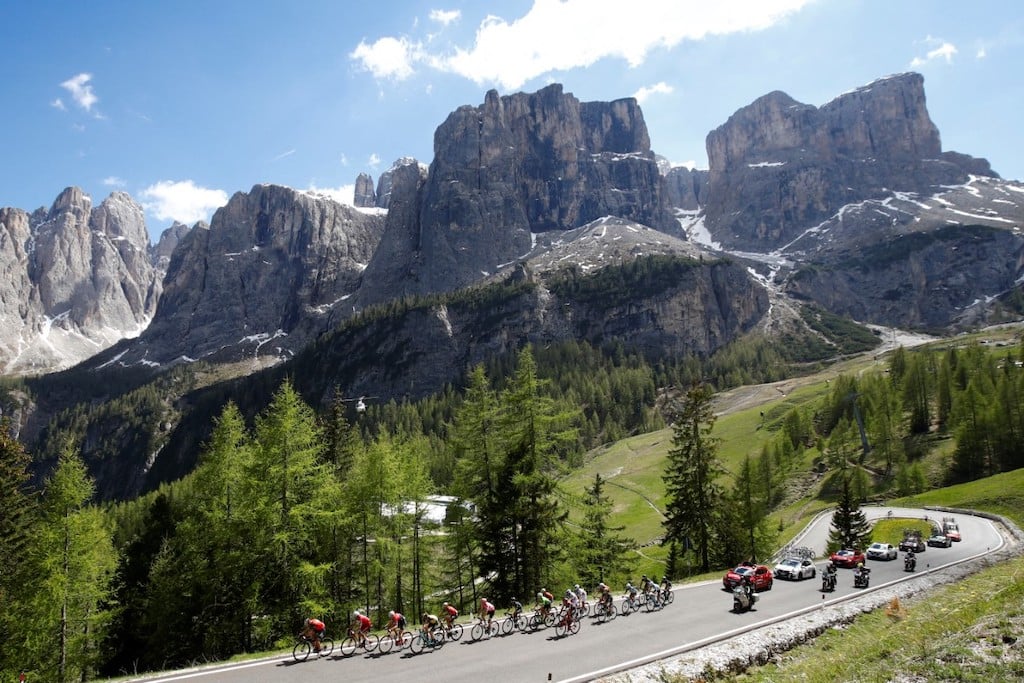Italy saw one of its best years for tourism in 2023, with a record-breaking number of passengers passing through the country’s airports.
But as tourism industry operators rejoice that the sector appears to have fully recovered from the pandemic slump, not everyone is celebrating.
Residents of some of the country’s biggest tourist hotspots say they’re being pushed out as properties are increasingly given over to holiday rentals, while others complain of their city becoming unliveable in peak season.
To combat the impact of overtourism, some some towns and cities are just starting to bring in measures to limit numbers; others have had restrictions in place for the past few years.
Here are the tourist-calming measures some of Italy’s most popular destinations are implementing this year.
Venice
One of Italy’s most over-touristed cities, Venice city authorities finally announced at the start of this year the dates on which it would introduce its long-awaited ‘tourist tax’ for day trippers in 2024.
The five euro fee applies to all those over the age of 14 visiting the city from April 25th to May 5th and on weekends throughout May and June, as well as the first two weekends in July.
READ ALSO: How will Venice’s ‘tourist tax’ work?
The system has been roundly criticised by the council’s centre-left opposition, however, who argue it’s little more than a cash-raising scheme that will have little impact tourist numbers and will mainly serve to inconvenience residents.

Florence
In a major step forward last October, Florence’s city council passed a landmark resolution banning new holiday rentals in the city centre, following in the footsteps of South Tyrol’s Bolzano.
Mayor Dario Nardella, from the centre-left Democratic Party, said the city needed local legislation to keep the number of tourist rentals down because government plans to tackle the issue had been “disappointing and inadequate”.
Existing holiday rentals are unaffected by the ban, however, meaning it’s unlikely to have much impact on numbers in the short term.
Cinque Terre
The five tiny towns that make up the Cinque Terre on the Italian Riveria are routinely overwhelmed by visitors in the spring and summer months.
READ ALSO: Why Italy needs a national plan for sustainable tourism – before it’s too late
To try to reduce the impact from tourism, reservations are now required to pass through Via dell’Amore, a pedestrian road overlooking the sea that connects Riomaggiore and Manarola.

There’s reportedly also talk of all five towns introducing a limit on the number of tourists visiting altogether, though this has yet to be brought in.
Last year the mayor of nearby Portofino, around 50km north of the Cinque Terre, made headlines when he introduced a ban on parking on the seafront in order to take a selfie, enforced by a fine of up to 275 euros.
Dolomites
Visitors to the Dolomites mountain range in northeastern Italy face new restrictions this summer, as cars and motorbikes travelling through some of the most popular mountain passes, including Sella, Gardena, Pordoi and Campolongo, will need to book online in advance.
READ ALSO: Nine alternative places you have to visit in Italy
The system is based on a licence plate recognition system introduced in summer 2022 on roads leading to the popular Lago di Braies that automatically grants entry to vehicles that have pre-purchased access online, and diverts those those that haven’t.
A couple of hours away from Lago di Braies, the city of Bolzano in 2022 introduced a ceiling on holiday apartments to prevent residents from getting squeezed out by a lack of long-term rentals.

Sardinia
Sardinia, with its Caribbean-like beaches that attract visitors from all over the world, has strict rules in place to limit the environmental impact from overtourism.
The famous La Pelosa beach in Stintino requires advance booking with an entry fee of €3.5 in the summer, and straw mats are compulsory if you want to put down your beach towel in order to avoid carrying away sand.
Baunei, on the island’s eastern shores, also has an app-based booking system to limit access to some of its smaller coves to 250 entries per day.
Islands
Last year the tiny island of Giglio off the coast of Tuscany introduced a ‘disembarkation tax’ of €3 from April to October and €2 from November to March for tourists, and in August the island only allows visitors to bring a car if they stay for at least four days.
The use of motorised vehicles was banned altogether on the Sicilian islands of Lampedusa and Linosa for non-residents between July 25th and September 5th last year, a measure which is expected to be reintroduced this year.
And the islands of Capri, Ischia and Procida off the Gulf of Naples have also introduced traffic restrictions for the tourist season in previous years.



 Please whitelist us to continue reading.
Please whitelist us to continue reading.
Member comments